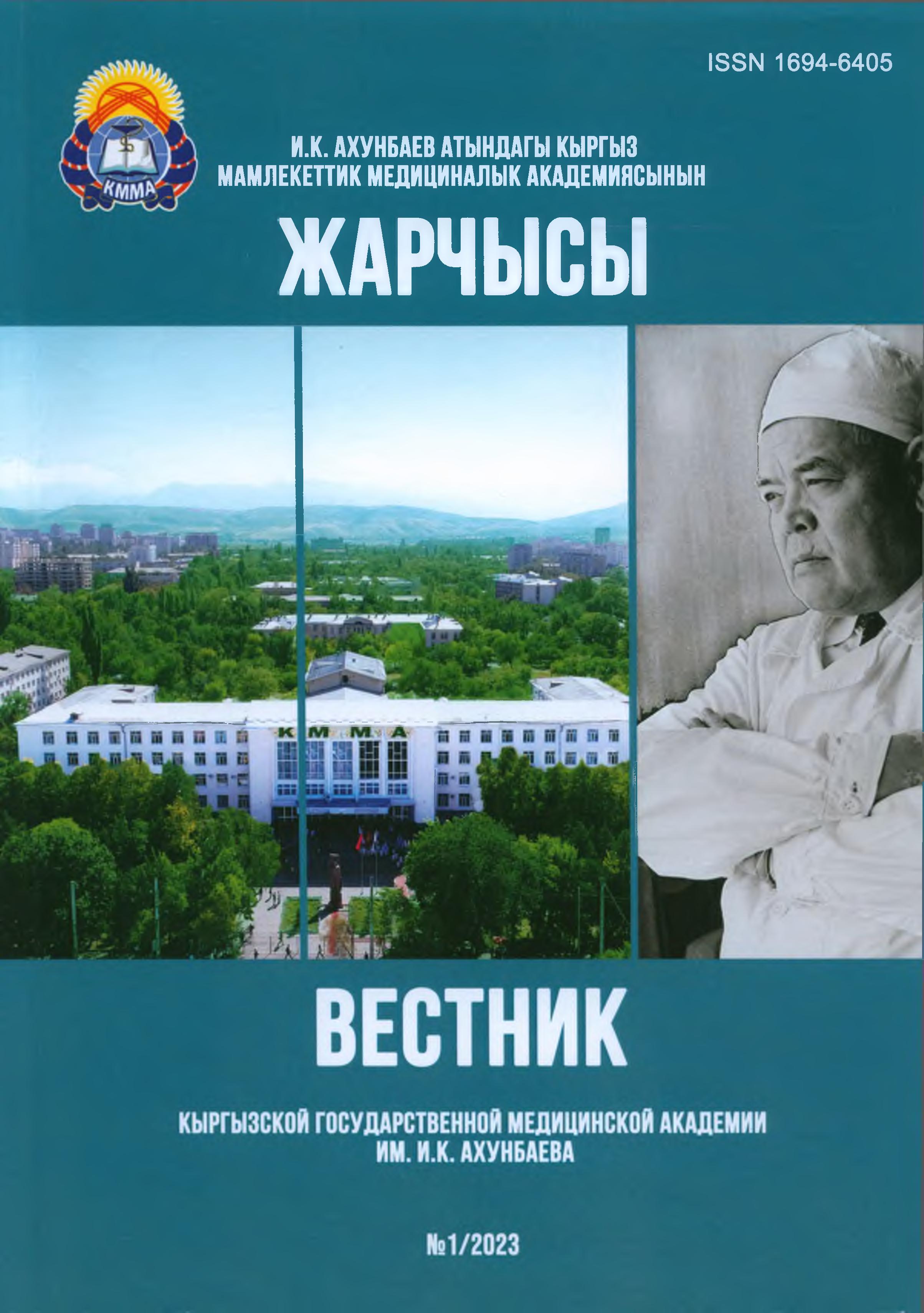COMPARATIVE CHARACTERISTICS OF SECRETARY DIARRHEA CAUSED BY ROTAVIRUS AND NOROVIRUS IN YOUNG CHILDREN
DOI:
https://doi.org/10.54890/1694-6405_2023_1_47Abstract
The paper gives a comparative clinical and epidemiological characteristic of secretory diarrhea in 117 young children with rotavirus and norovirus infections who received treatment at the Republican Clinical Infectious Diseases Hospital in Bishkek for the period 2016- 2020. As a result of the study, it was found that secretory diarrhea caused by rotavirus is more often (58,1%) observed in children of the first year of life, especially at the age of 6 to 9 months. (36,0%). Whereas norovirus infection, significantly p<0.01 more often (61,3%) occurs among children aged 1 to 3 years, with an aggravated premorbid background (64,5%), including anemia (40,0%) and rickets (25,0%). Basically, children from the compared groups were admitted in the winter season (88,5%; 67,8%) and were residents of the city of Bishkek (60,5%; 67,7%), boys predominated among the patients (54,7%; 54,8%). The disease in the 2 compared groups began acutely with symptoms of gastroenteritis. Secretory diarrhea caused by rotavirus proceeded mainly in severe form (61,4%; 45,2%) with an unfavorable outcome in 4,0% of cases. In children with norovirus infection, significantly p<0.01 more often (38,6%; 51,6%), the disease proceeded in a moderate form. It should be noted that the symptoms of moderate dehydration (31,3%; 48,4%) were more often detected in children with norovirus infection (group 2). The diagnosis of rotavirus and norovirus infections was confirmed using an immunochromatographic rapid stool test. All children with norovirus infection and the vast majority (96,0%) of children with rotavirus infection were discharged from the hospital with improvement.
Keywords:
children, secretory diarrhea, norovirus, rotavirus, epidemiology, clinic, diagnosis, treatment.References
1. Crawford SE, Ramani S, Tate JE, Parashar UD, Svensson L, Hagbom M et al. Rotavirus infection. Nat Rev Dis Primers. 2017;3(17083):1-16. https://doi.org/10. 1038/nrdp.2017.83
2. Беделбаев М.К., Джолбунова З.К., Халупко Е.А., Иманкулова А.С. Клинико-эпидемиологические особенности секреторных диарей у детей раннего возраста. Журнал здравоохранение Кыргызстана. 2022; 1:59-64. [Bedelbaev MK, Dzholbunova ZK, Khalupko EA, Imankulova AS. Clinical and epidemiological features of secretory diarrheas in children of early age. Health care of Kyrgyzstan. 2022;1:59-64. (In Russ.).] https://doi.org/10.51350/zdravkg202231859
3. Асилова М.У., Мусабаев Э.И., Убайдуллаева Г.Б. Вирусные диареи в структуре острых кишечных инфекций у детей. Журнал инфектологии. 2011;3(3):56-59. [Asilova MU, Musabaev EI, Ubaydullaeva GB. Viral diarrhea in structure of acute intestinal infections in children. Journal Infectology. 2011;3(3):56-59. (In Russ.).] https://doi.org/10.22625/2072-6732-2011-3-3-56-59
4. Ермоленко К.Д., Лобзин Ю.В., Гончар Н.В. Вирусные гастроэнтериты у детей: современные представления об эпидемиологии и профилактике. Журнал инфектологии. 2015; 7(3): 22-32. [Ermolenko KD, Lobzin YuV, Gonchar NV. Viral gastroenteritis in children: modern concepts of epidemiology and prevention. Journal Infectology. 2015;7(3):22-32. (In Russ.).] https://doi.org/10.22625/2072-6732-2015-7-3-22-32
5. Пронько Н.В., Красько Ю.П. Норовирусная инфекция: особенности эпидемиологии и клинико-лабораторных проявлений на современном этапе. Актуальная инфектология. 2022;5(1):14-17. [Pron'ko NV, Kras'ko JuP. Norovirus infection: features of epidemiology and clinical and laboratory manifestations at the present stage. Actual infectology. 2022;5(1):14-17. (In Russ.).]. https://doi.org/10.22141/2312-413x.5.1.2017.98770
6. Li Hy, Zhang Yg, Lei X. Song J, Duan Zj. Prevalence of noroviruses in children hospitalized for acute gastroenteritis in Hohhot, China, 2012-2017. BMC Infect Dis. 2019;19(595):1-10. https://doi.org/10.1186/s12879-019-4230







